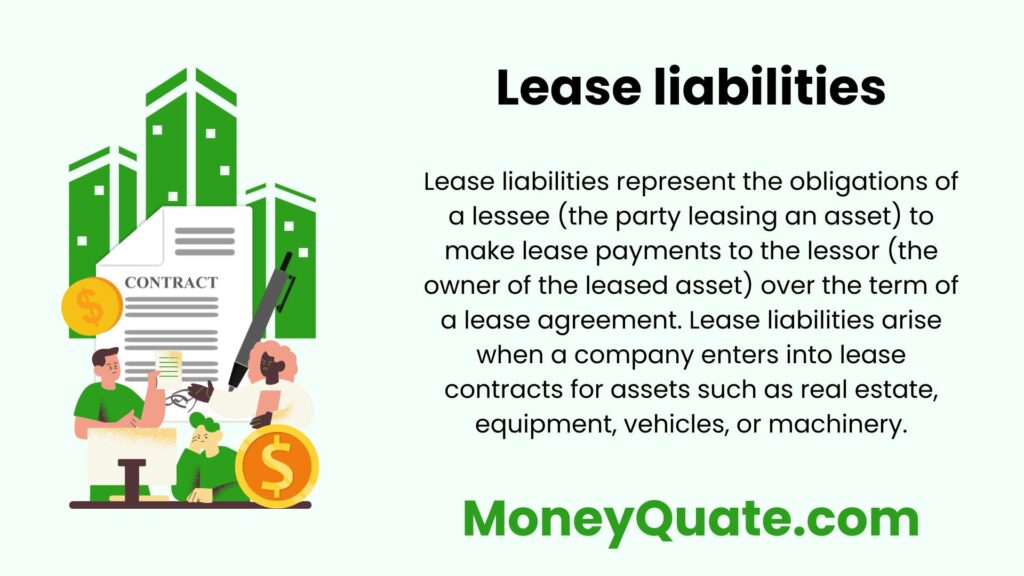Identifying lease liabilities involve recognizing lease agreements that meet specific criteria outlined in accounting standards. Here’s a breakdown of the process:

Contents
Criteria for Identifying Lease Liabilities
Existence of a Lease Contract:
Lease liabilities arise from lease contracts, which are agreements conveying the right to use an asset (the underlying leased asset) for a specified period in exchange for consideration.
Lease Term Exceeding One Year:
They typically arise from lease agreements with terms exceeding one year. Short-term leases with terms of one year or less are exempt from lease accounting requirements.
Transfer of Control over the Asset:
Lease liabilities arise when the lessee (the party leasing the asset) obtains the right to control the use of the underlying asset for the lease term.
Substance Over Form:
Lease accounting focuses on the substance of lease arrangements rather than their legal form. Even if a lease is not explicitly documented, lease liabilities may still exist if the arrangement transfers control over the asset to the lessee.
Steps to Identify Lease Liabilities
Review Lease Agreements:
Identify lease agreements within the organization’s operations. This involves reviewing contracts, agreements, or arrangements that convey the right to use assets owned by other parties.
Assess Lease Terms:
Evaluate the terms of each lease agreement to determine if they meet the criteria for lease classification, including lease term, control over the asset, and economic substance.
Apply Lease Accounting Standards:
Apply relevant accounting standards (e.g., ASC 842 for U.S. GAAP or IFRS 16 for IFRS) to assess whether the lease arrangement qualifies as a lease under the accounting guidelines.
Determine Lease Classification:
Classify each lease as either an operating lease or a finance lease based on criteria such as the transfer of control, lease term, and present value of lease payments.
Calculate Lease Liabilities:
For finance leases, calculate the present value of future lease payments using the appropriate discount rate and recognize the lease liability on the balance sheet.
For operating leases, disclose future lease payments in the notes to the financial statements without recognizing a lease liability on the balance sheet (prior to ASC 842 and IFRS 16 implementation).
Periodic Review and Updates:
Regularly review lease agreements and reassess lease classification and lease liability calculations, particularly when there are significant changes to lease terms or business operations.
Importance of Identifying Lease Liabilities
- Financial Reporting Accuracy: Accurate identification of lease liabilities ensures compliance with accounting standards and enhances the accuracy and transparency of financial reporting.
- Investor Confidence: Transparent disclosure of lease liabilities provides investors and stakeholders with valuable insights into the company’s long-term financial obligations and commitments.
- Risk Management: Proper identification of lease liabilities enables management to effectively manage lease-related risks, such as lease term mismatches, lease payment obligations, and lease renewal considerations.
By following these steps and criteria, organizations can effectively identify lease liabilities and ensure compliance with lease accounting standards, resulting in improved financial reporting and decision-making processes.